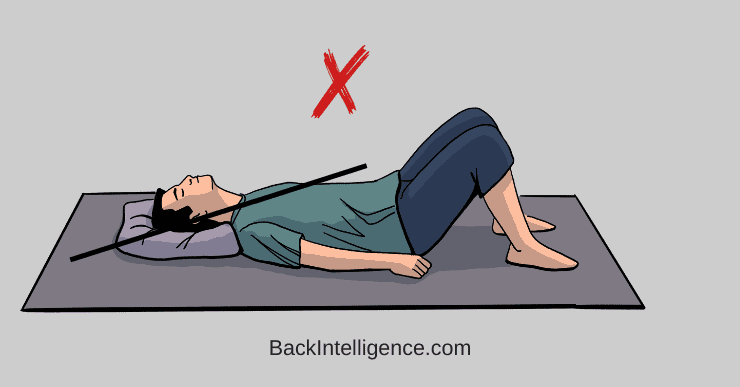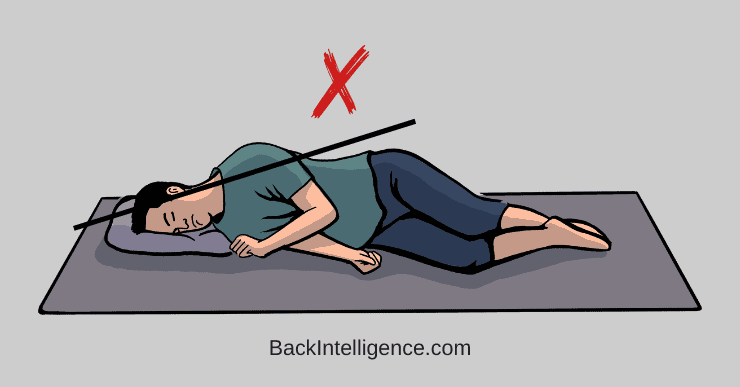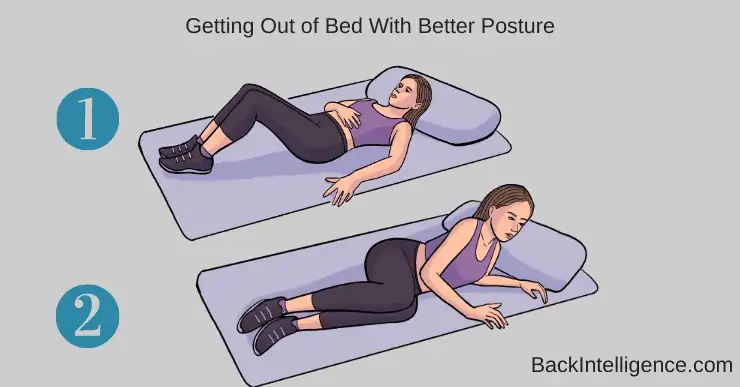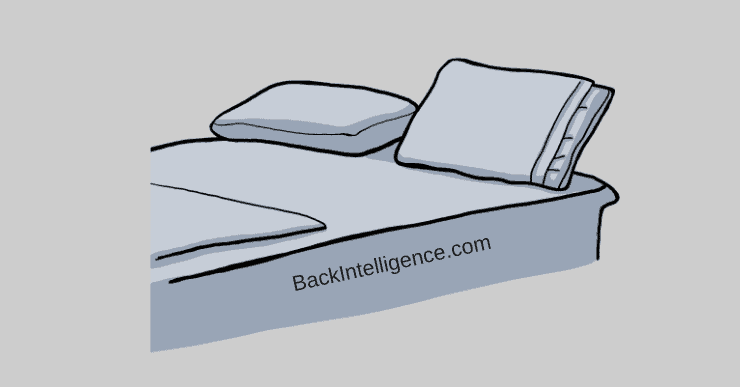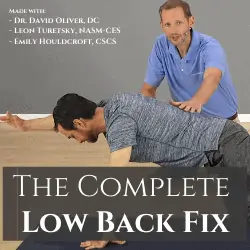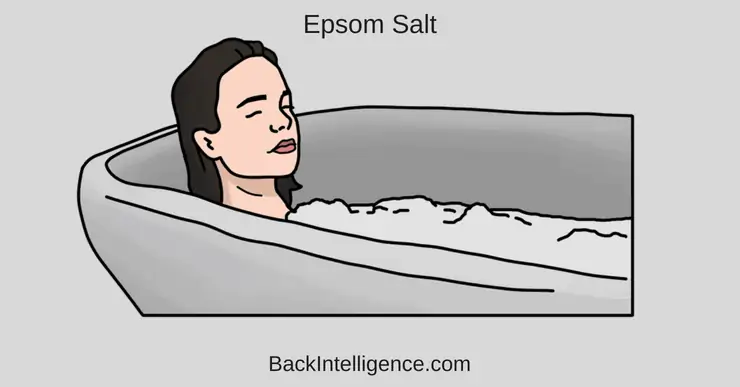
Since many people already have enough trouble sleeping in the first place, adding back issues into the mix can make for a stressful night. But the good news is that adopting the 6 tips below on how to sleep with lower back pain can make a huge difference.
Sleeping and Lower Back Pain
According to the National Sleep Foundation, regular episodes of low back pain can cause a person to sleep more lightly than they normally would and wake up more frequently during the night.
Source: http://www.scielo.br/scielo.php?script=sci_arttext&pid=S0103-51502015000400803
To make things simple, let’s look at the biggest “dos” of how to sleep with lower back pain…
7 Tips on Sleeping with Low Back pain:
Tip #1: Adjust your sleeping position
The 2 Best sleeping positions For Your low back are On the back & On the side. Let’s dive deeper into these 2 positions and also highlight some common mistakes.
1st Position – Sleeping on the back:
- Sleeping on your back is the best sleeping posture because it helps distribute weight evenly across the body and keeps proper alignment of your head, shoulders and hips.
- For the head: Use a thinner pillow to make sure your head doesn’t protrude forward – which can contribute to forward neck posture.
- For the lower body: Use a pillow under your knees, to avoid your low back from hyperextension, which can contribute to Anterior pelvic tilt.
Mistakes (Sleeping on the back):
Pillow Too Thick/Big
- If your pillow is too thick, it will put your neck at a terrible angle, and throw off the whole body alignment. This can also cause neck issues and reinforce poor posture.
Pillow Too Thin/Small
- If your pillow is too thin, this can put your neck at an extension and affect the entire alignment of your body. Overtime this can cause neck and postural issues.
2nd Position – Sleeping on the side:
- This is another great sleeping position for your low back. The reason is because it keeps your spine at a neutral position.
- For the head: When lying on your side, use a thicker pillow so that your head and neck are positioned in the middle of your shoulders.
- For the lower body: Use a pillow in between your knees in order to maintain proper alignment of the hips, so that they don’t sink down.
Mistakes (Sleeping on the side):
Pillow Too Thick/Big
- If your pillow is too thick, your neck angle will be completely off. This will affect the entire alignment of your body. For proper alignment, you want your head to be in between your shoulders.
Pillow Too Thin/Small
- With this mistake your neck will sink down, putting a lot of strain on your neck and shoulders. This also affects the entire body’s postural alignment.
Related: How To get rid of a stiff neck
Tip #2: Be Mindful of How You Get in and Out of Bed
Jerking yourself out of bed quickly or getting in too fast can exacerbate lower back pain, so make sure you’re careful about doing each.
- When getting into bed: Sit down on the edge of the bed. Now engage your core and bend over the side while supporting yourself with your forearm. At the same time bring your knees to the bed. Now you can either stay on the side position, or roll onto the back.
- When getting out of bed: Do the opposite of getting into bed. Roll onto your side first towards the edge of the bed, bend your knees, engage your core, then use your arms to help push yourself up and bring your legs over the edge of the bed. This will prevent you from “doing a sit up”, which can trigger pain.
Tip #3: Find the Best Mattress and Pillows for Your Back
Much like sleeping positions, there is not one true type of mattress or pillow that will work for everyone with lower back pain, so make sure to experiment with what feels best for you.
- In general, we recommend a medium-firm mattress over a very soft one. You want the mattress to provide support, so make sure you’re not “sinking in.”
- How long you’ve had your mattress? If it’s been over eight years, it might be time to do some mattress shopping. Although mattresses can last a while, their materials do break down over time and lose those qualities that help support a healthy sleep position.
- Look for pillows that can support sleeping on the back and on the side (as mentioned in #1). There are specialized pillows that are suitable for both positions. Remember that generally you need a thinner pillow when lying on the back, and thicker pillow when lying on the side.
The Complete Low Back Fix (With Dr. Oliver, DC)
Ease your Low back pain, gain mobility and get back to the things you enjoy doing.
Learn More
Tip #4: DON’T Sleep in an Extreme Position (Too Arched or Too Flat)
Make sure your back isn’t too arched, or too flat throughout the night. You want to be mindful of the neutral spinal position. When you catch yourself deviating from neutral, simply re-adjust!
Tip #5: DON’T Sleep on your stomach
It’s best to avoid sleeping on your stomach because it places extra stress on the muscles of your neck, as well as puts your spine in hyperlordosis (aka overly arched). If you can’t avoid this position, try to either use a very thin pillow or skip using a pillow all together.
Tip #6: Relax with a Warm Bath/Meditation prior to sleeping
There is a lot of research showing that psychological health can contribute to low back pain. Therefore taking a warm bath, or meditating/doing breath work prior to sleep, can be beneficial. It will help slow down your nervous system and help you mentally prepare for sleeping.
Tip #7: Do Light Stretching Before Bed
To reduce some of the stiffness you may want to do some light stretching before bedtime. The Cat & Cow stretch is one of the best dynamic stretches you can do to release muscle tension, as well as mobilize your spine and pelvic area. Be sure to check out more low back stretches here.
Going Beyond:
You also want to do corrective exercises to improve your posture, strength and mobility. The 2 most common posture imbalances you want to address are:
- Anterior Pelvic Tilt (click for exercises)
- Forward Head Posture (click for exercises)
- How to relieve lower back pain
Learn More
Corrective Exercise Specialist (NASM-CES), Certified Personal Trainer (NASM-CPT), Professional Dancer
As a long time back sufferer Leon found unique methods to alleviate his pain using natural methods including self massage, exercise/stretching and postural habits. He founded Backintelligence.com to empower others to fix their postures and ease their back pain from home.



